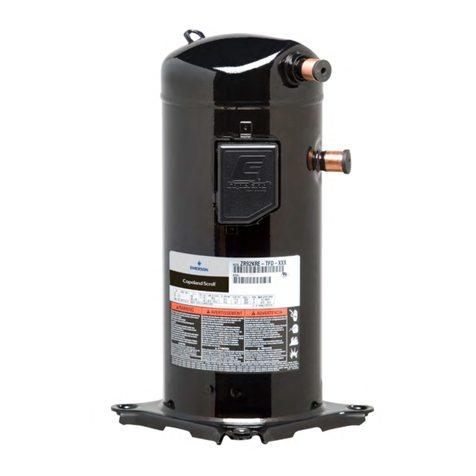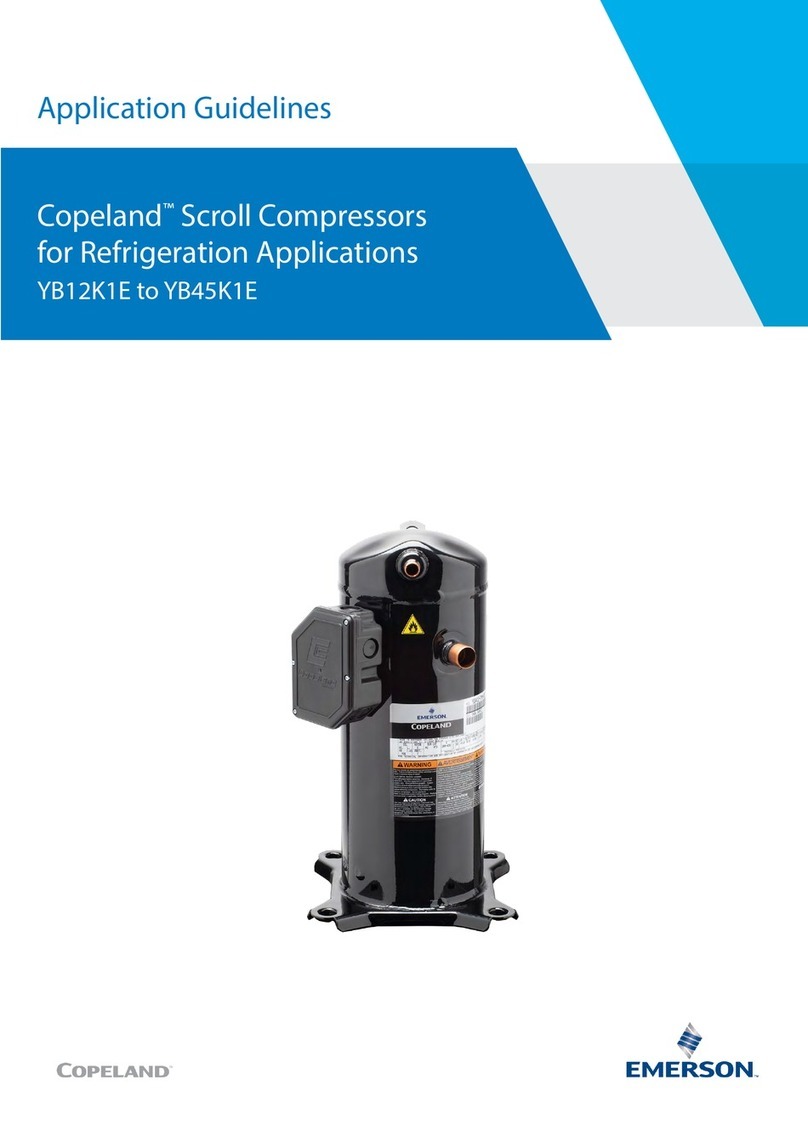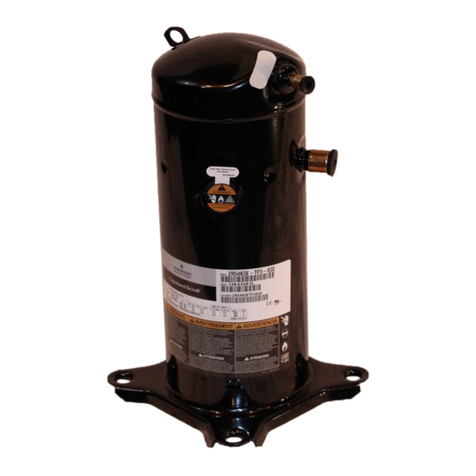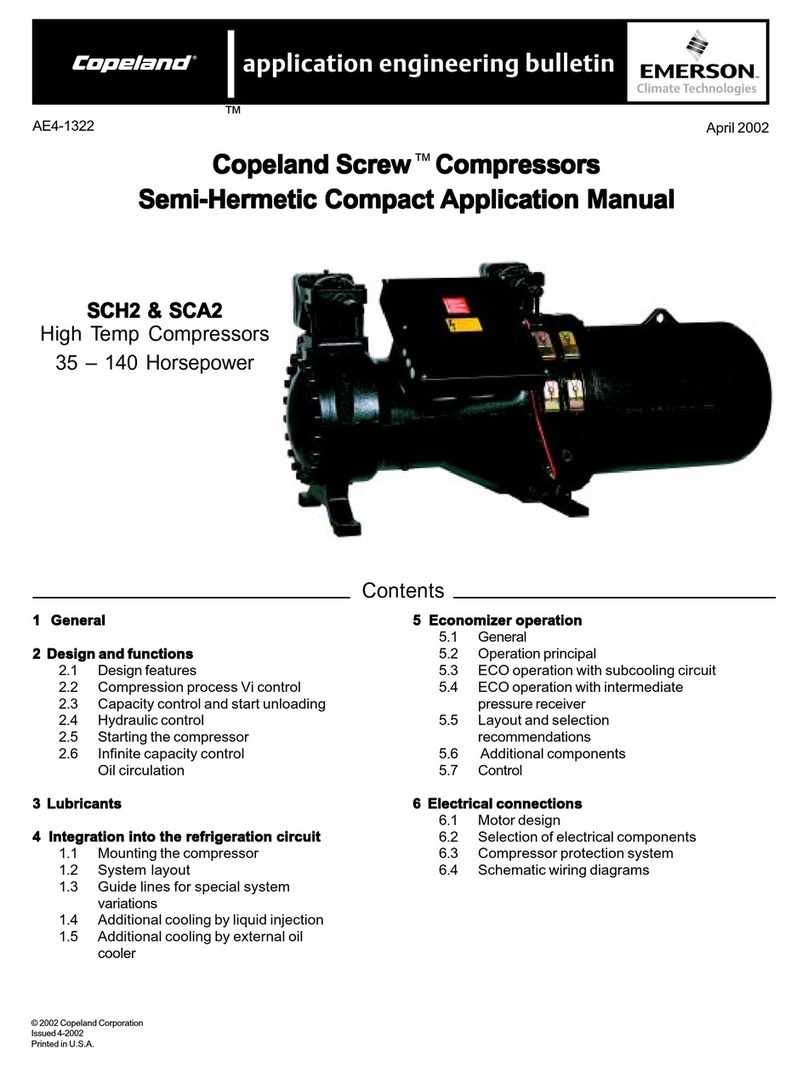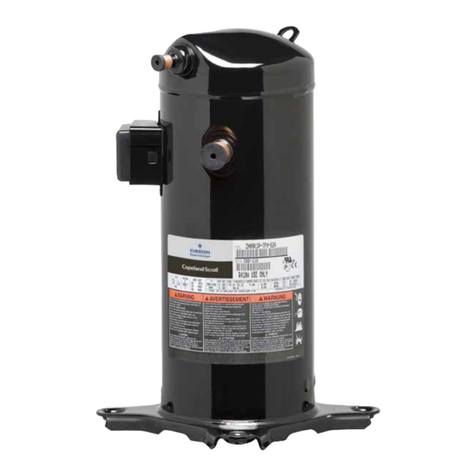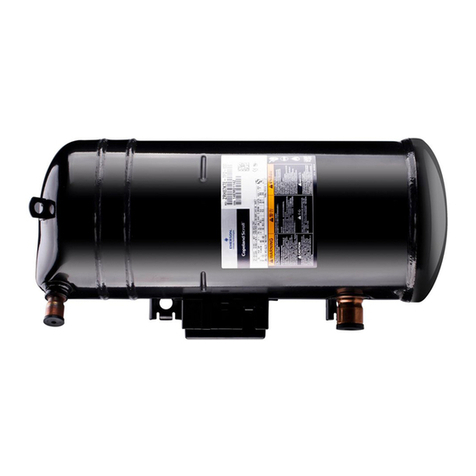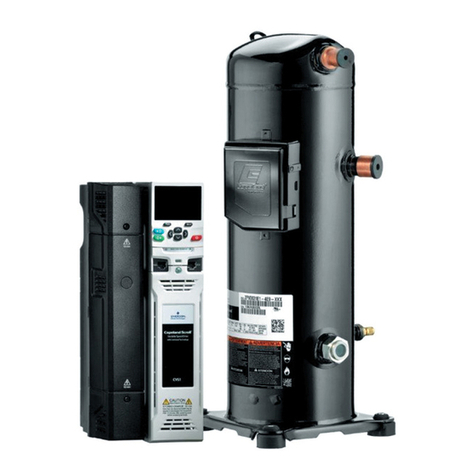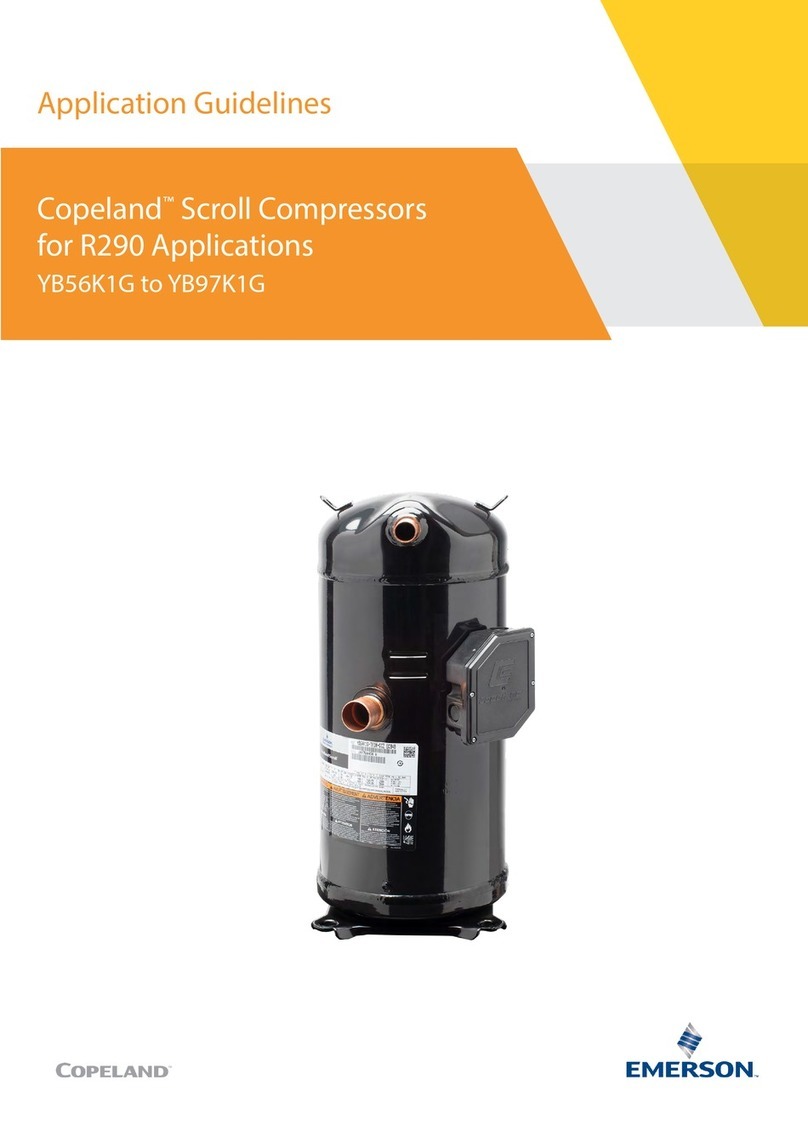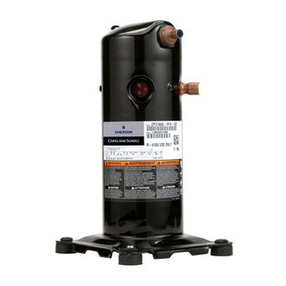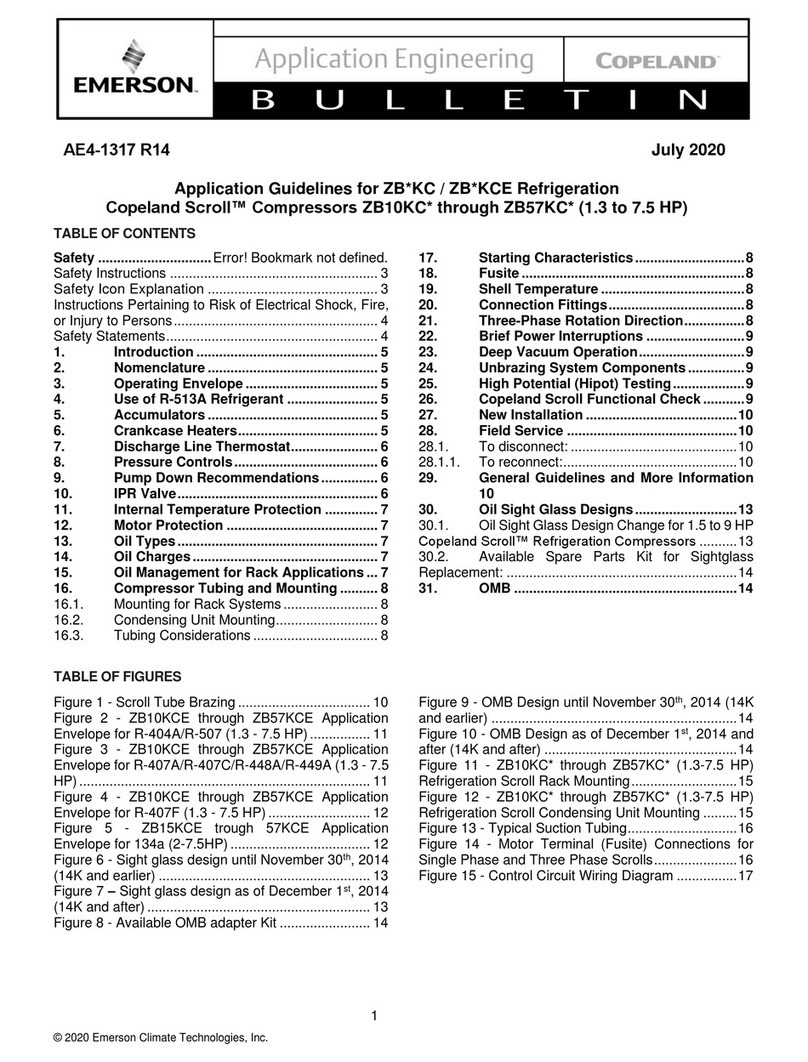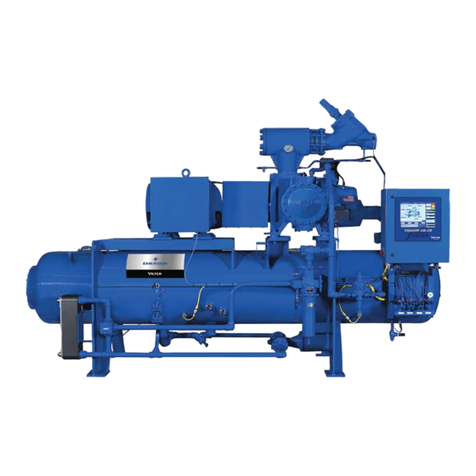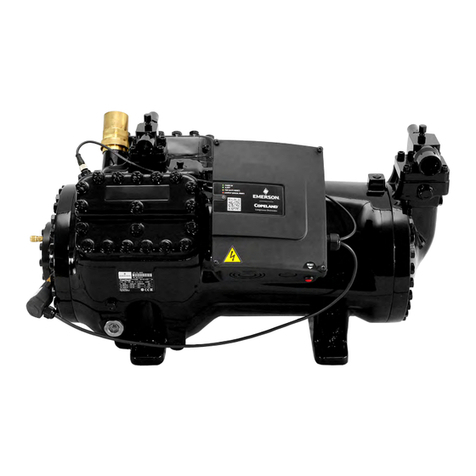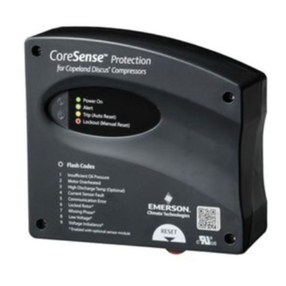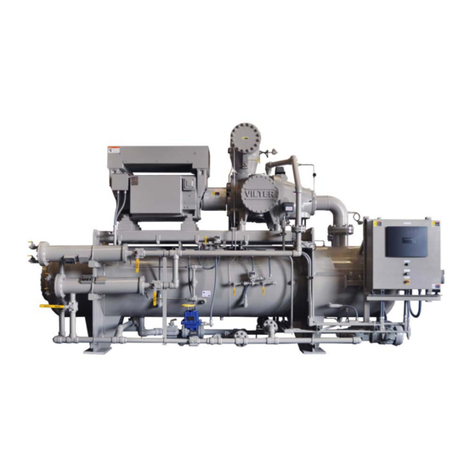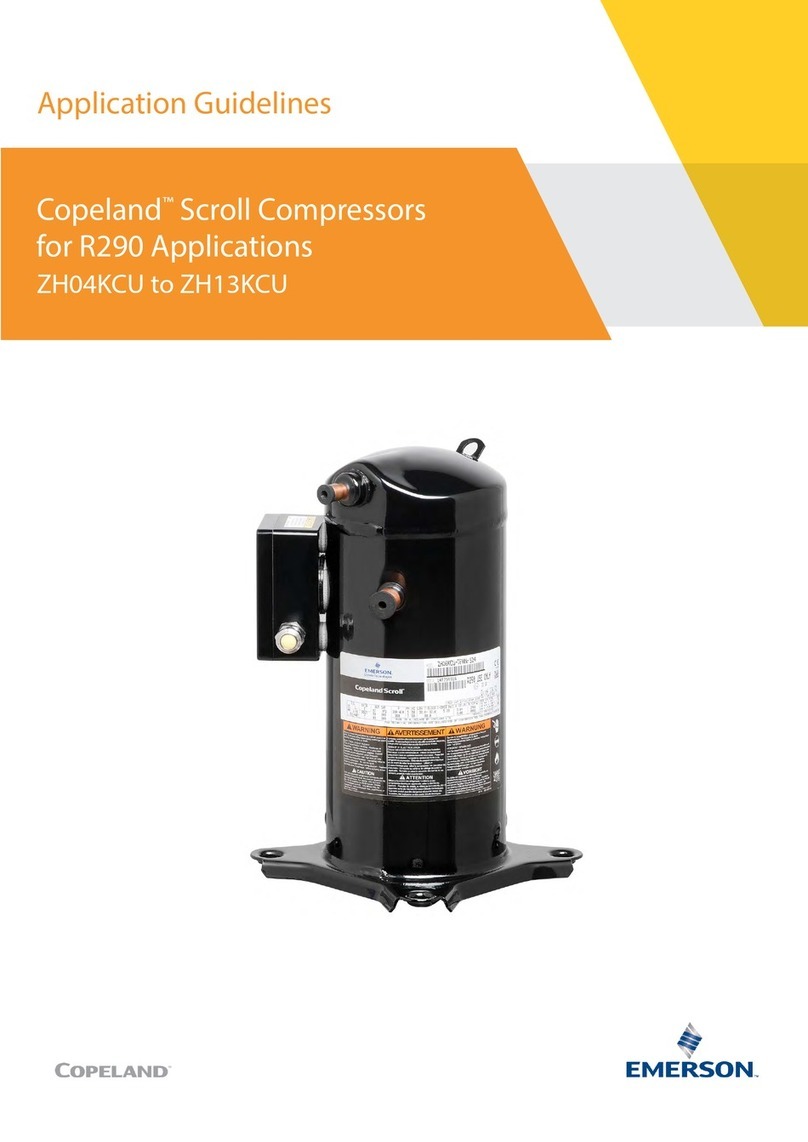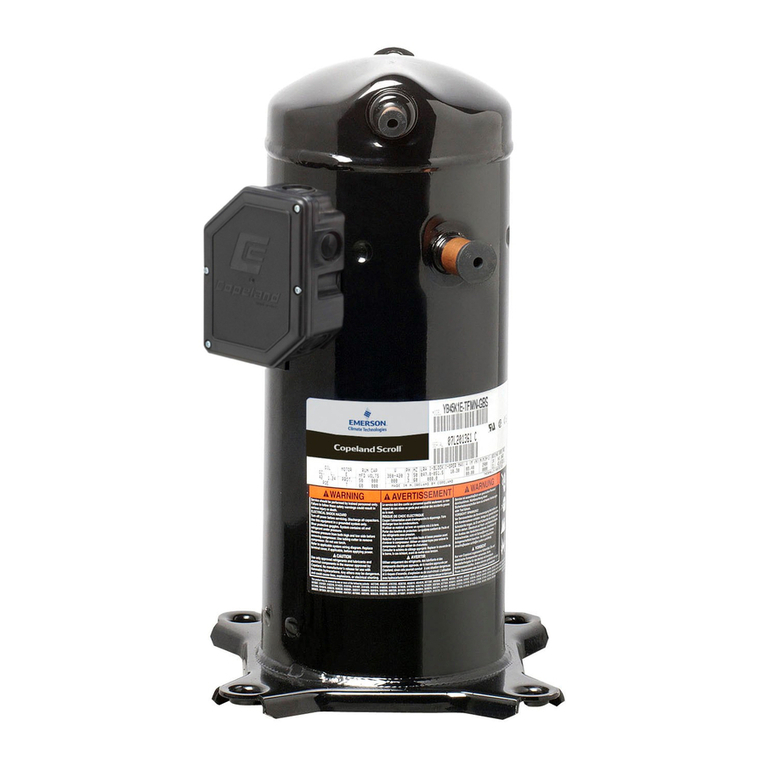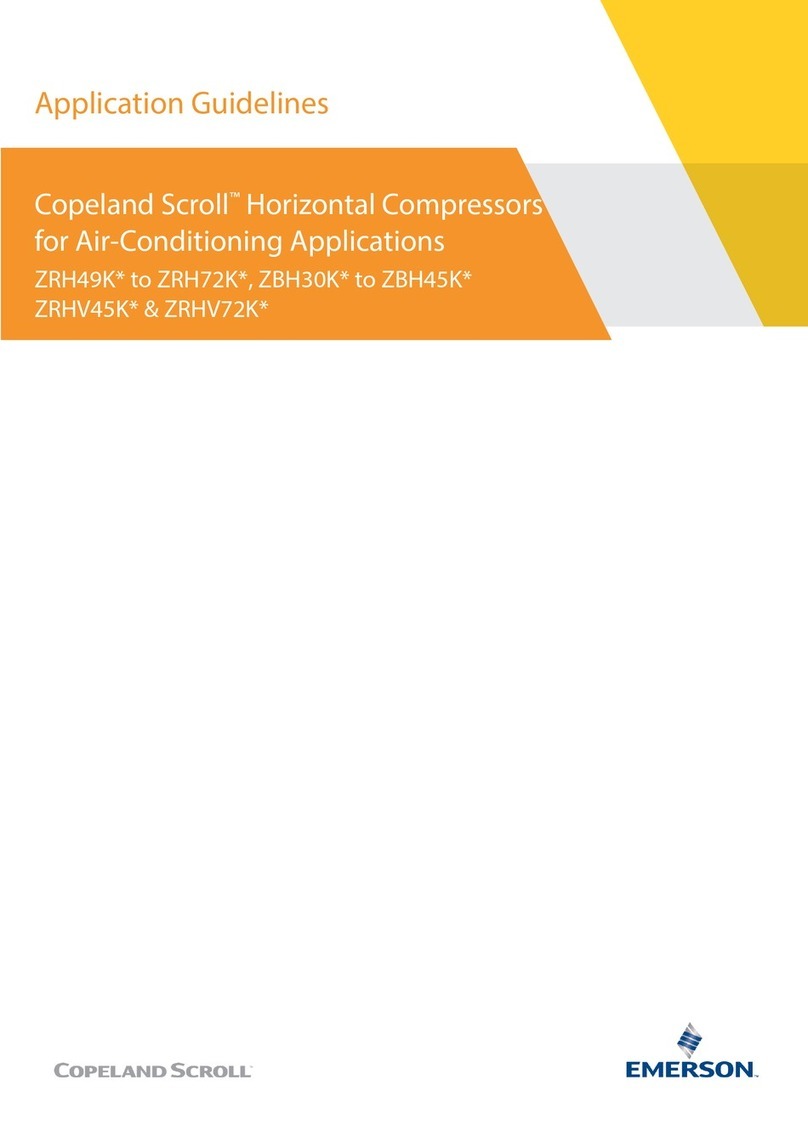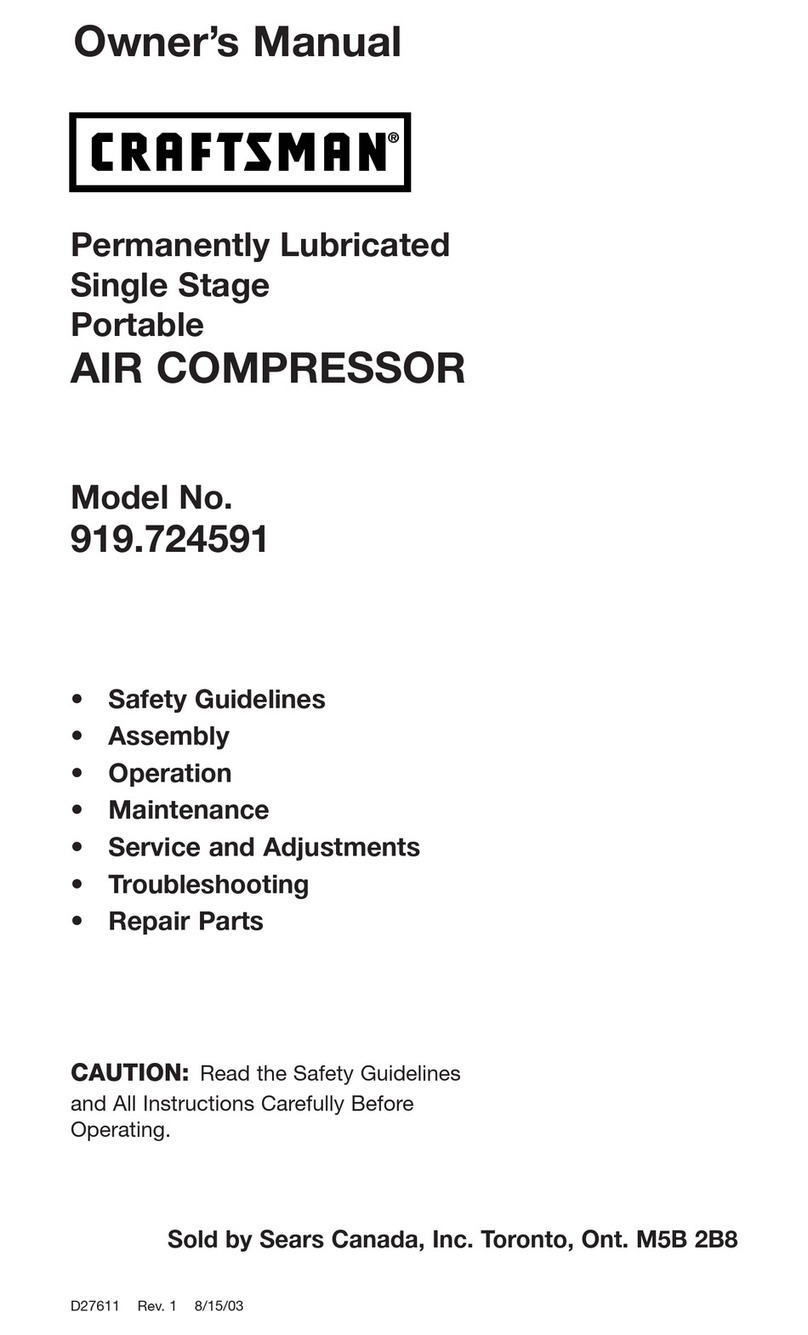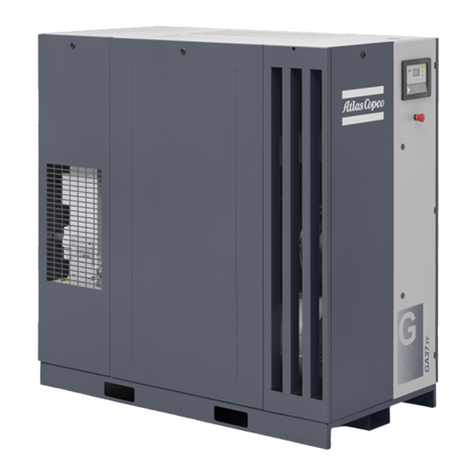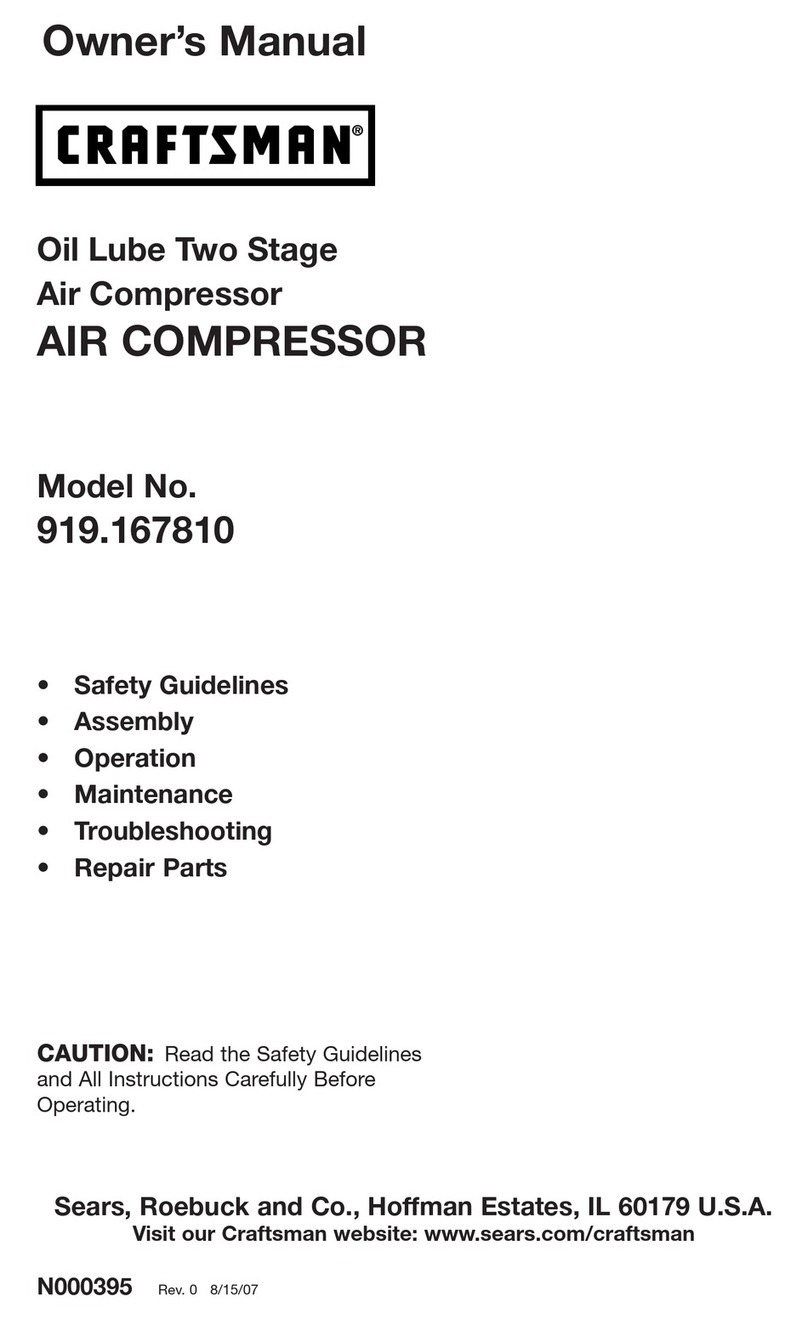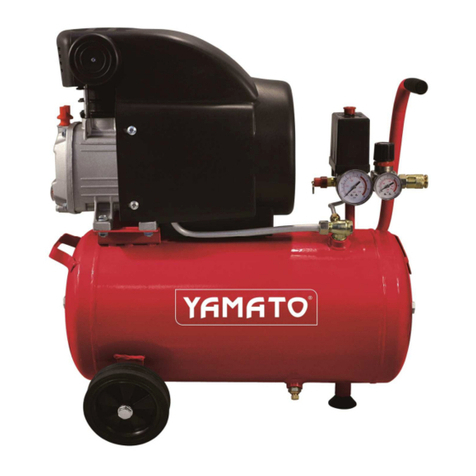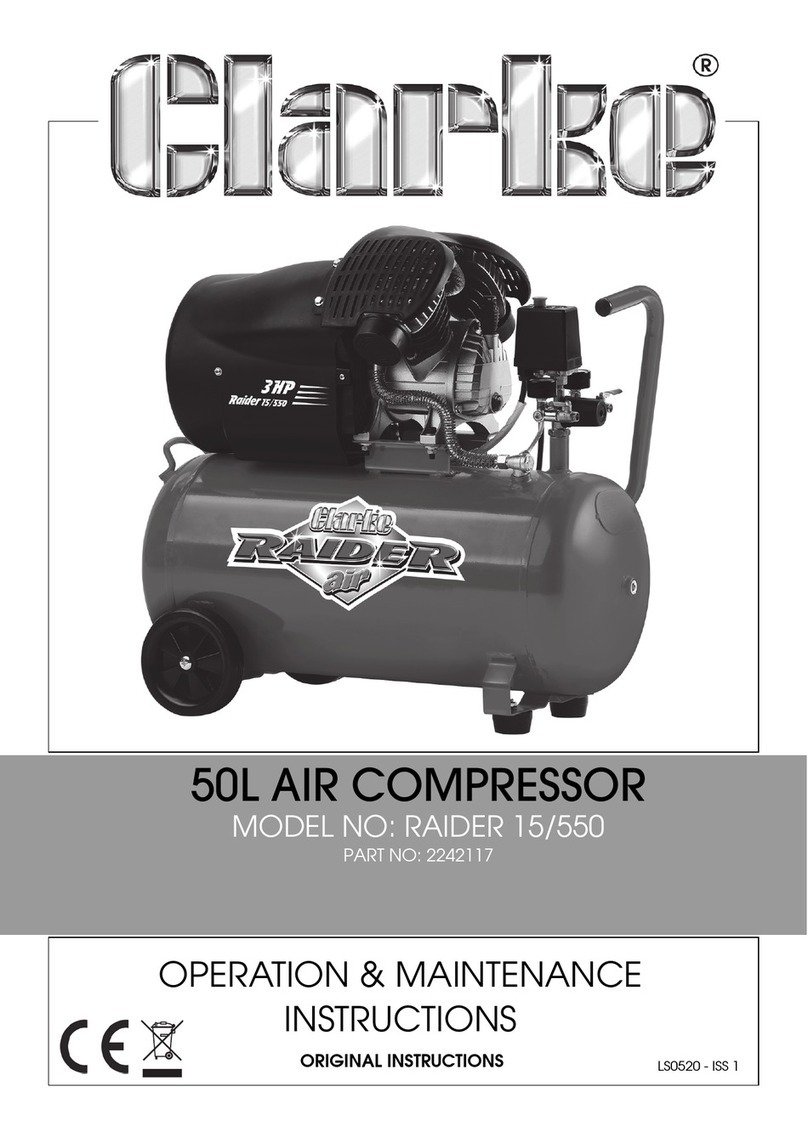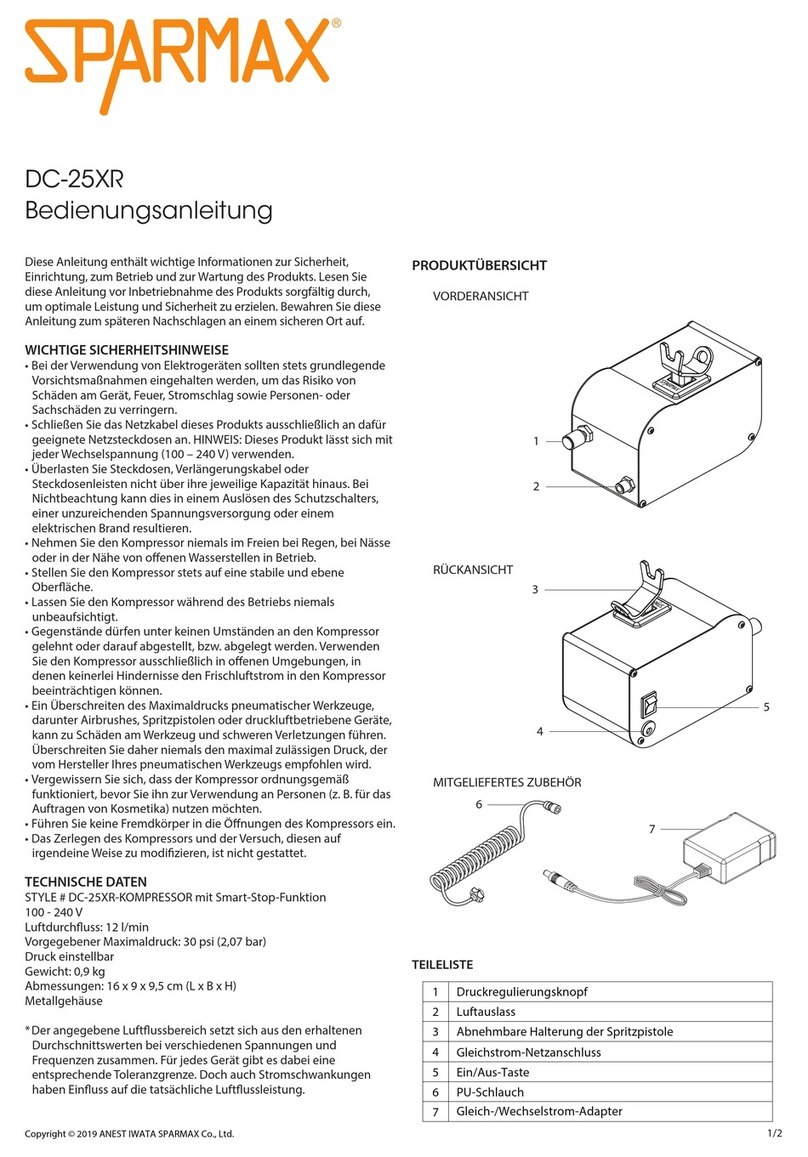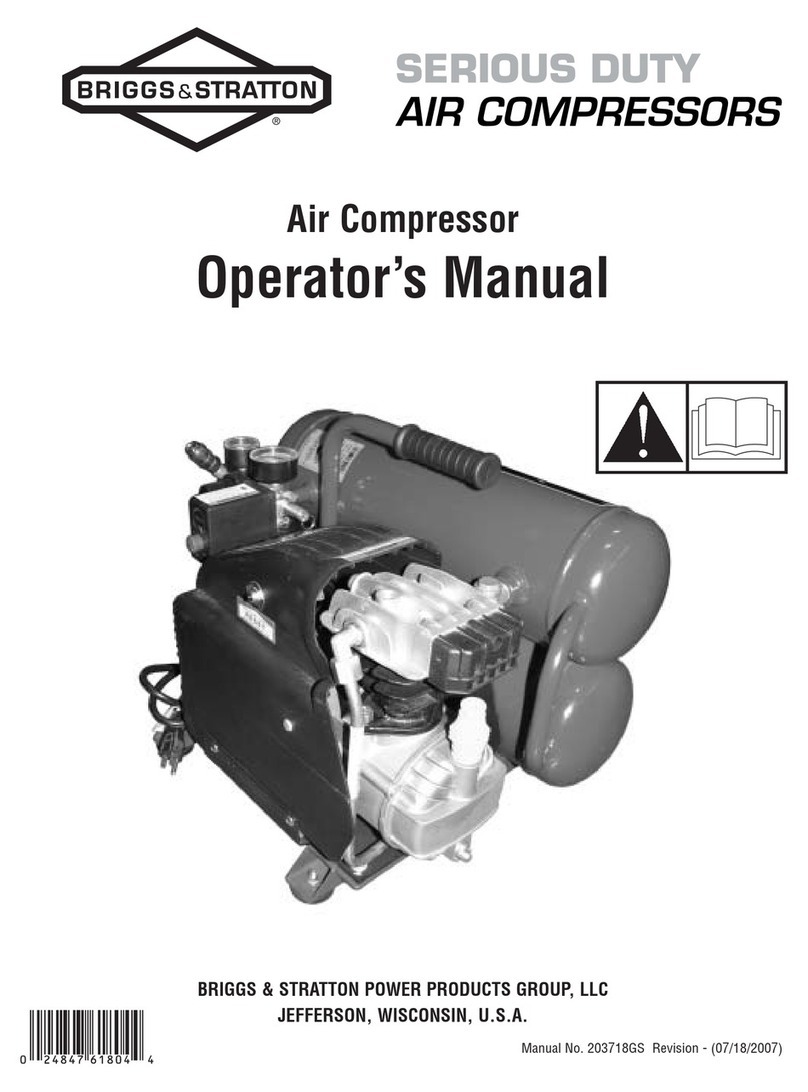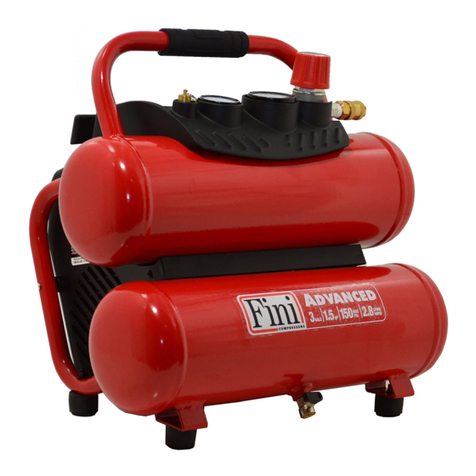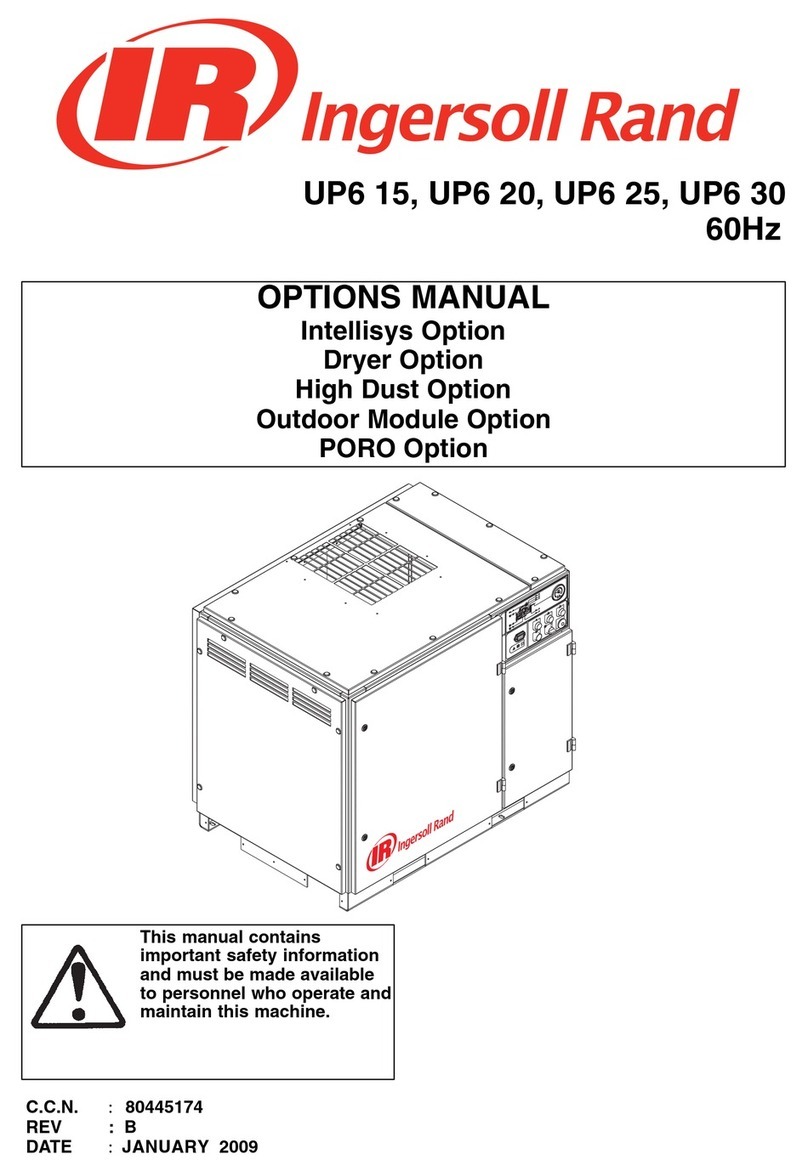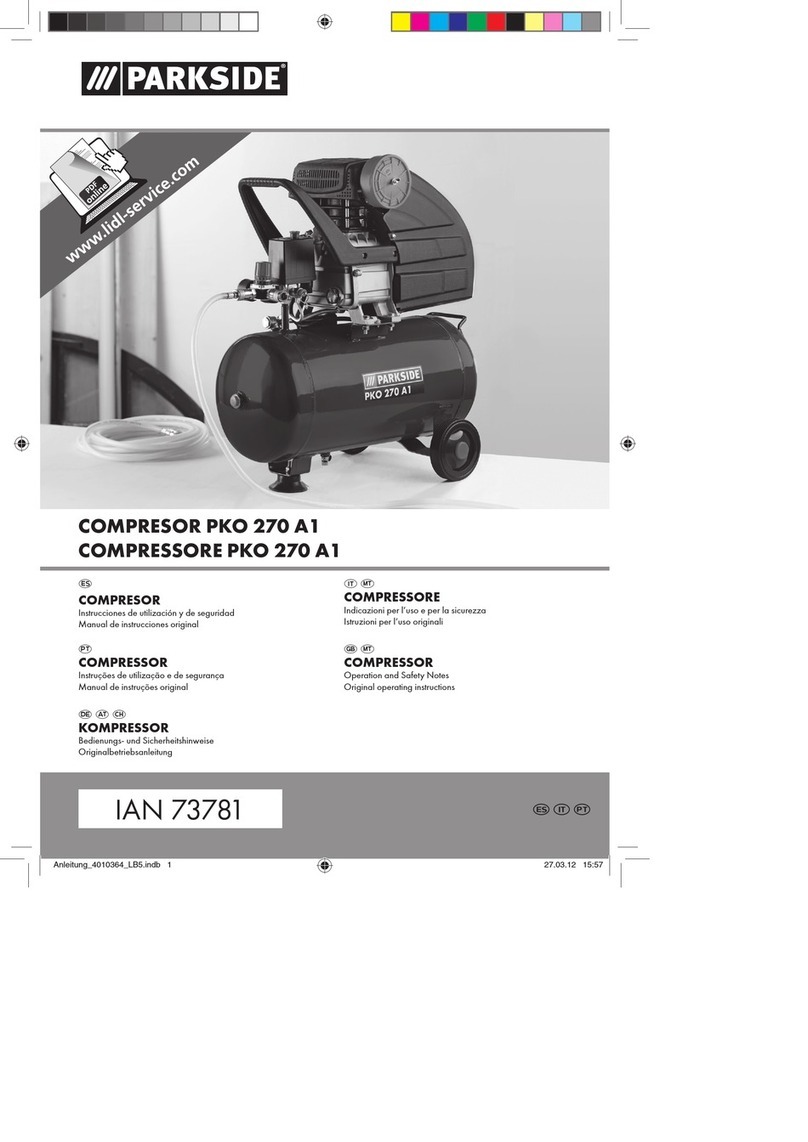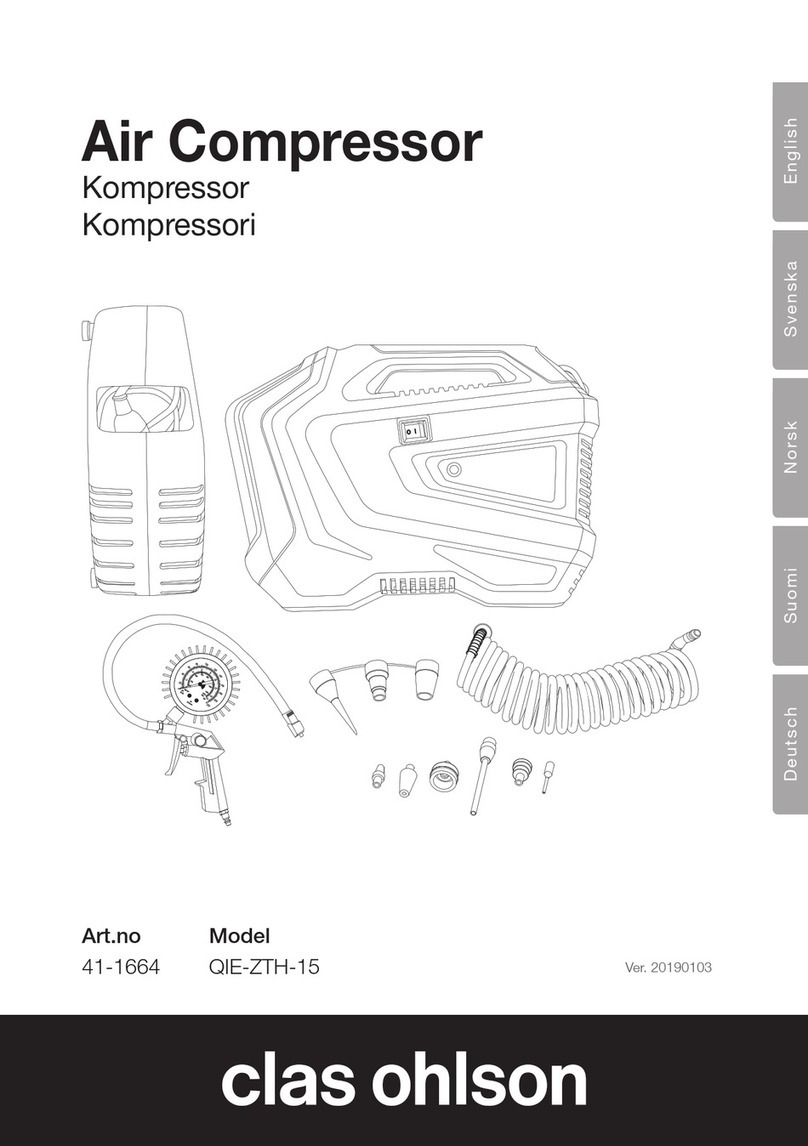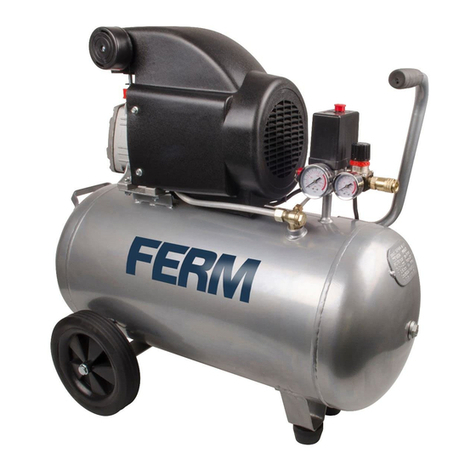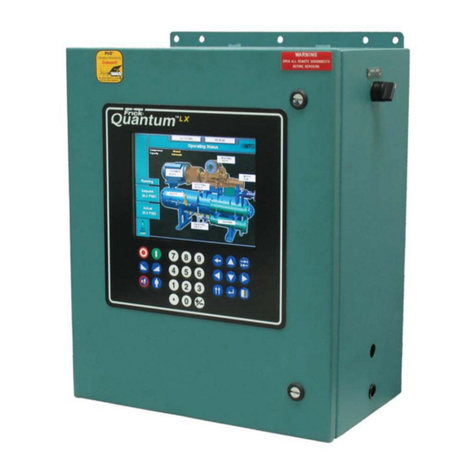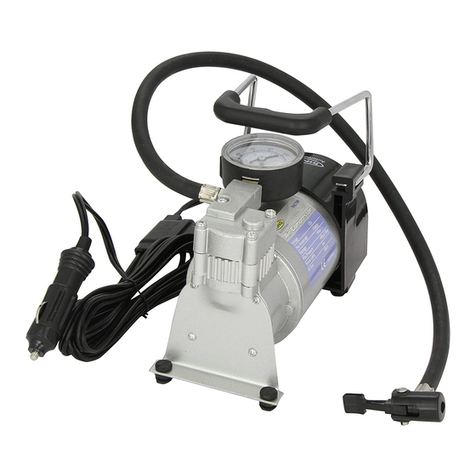About these guidelines ................................................................................................ 1
1Safety instructions............................................................................................ 1
1.1 Icon explanation.................................................................................................................1
1.2 Safety statements ..............................................................................................................2
1.3 General instructions...........................................................................................................2
2Product description .......................................................................................... 3
2.1 General information about Copeland Scroll™ compressors .............................................3
2.2 Variable speed advantages ...............................................................................................4
2.3 Compressor and drive nomenclature.................................................................................5
2.4 Application considerations.................................................................................................5
2.4.1 Qualified refrigerant and oil....................................................................................5
2.4.2 Admissible temperature and relative humidity ranges ...........................................6
2.4.3 Application limits & operating envelopes................................................................6
2.4.4 Discharge line temperature control mode............................................................10
2.4.5 Design features ....................................................................................................10
2.4.6 Oil recovery ..........................................................................................................10
2.5 Dimensions ......................................................................................................................11
3Installation....................................................................................................... 12
3.1 Compressor and drive handling.......................................................................................12
3.1.1 Compressor transport and storage ......................................................................12
3.1.2 Compressor positioning and securing..................................................................12
3.1.3 Installation location...............................................................................................12
3.1.4 Compressor mounting parts.................................................................................13
3.2 Compressor brazing procedure .......................................................................................13
3.3 Suction line accumulators................................................................................................14
3.4 Filter screens ...................................................................................................................15
3.5 Mufflers ............................................................................................................................15
3.6 Sound shell ......................................................................................................................15
3.7 Insulation material............................................................................................................15
3.8 Reversing valves..............................................................................................................15
3.9 Sound and vibration.........................................................................................................16
4Electrical connection...................................................................................... 17
4.1 General recommendations...............................................................................................17
4.2 Electrical installation ........................................................................................................17
4.3 Wiring diagrams...............................................................................................................19
4.3.1 Motor windings .....................................................................................................21
4.3.2 Protection devices................................................................................................21
4.3.3 Crankcase heating function..................................................................................21
4.4 Pressure protection devices ............................................................................................21
4.4.1 High-pressure protection......................................................................................21

